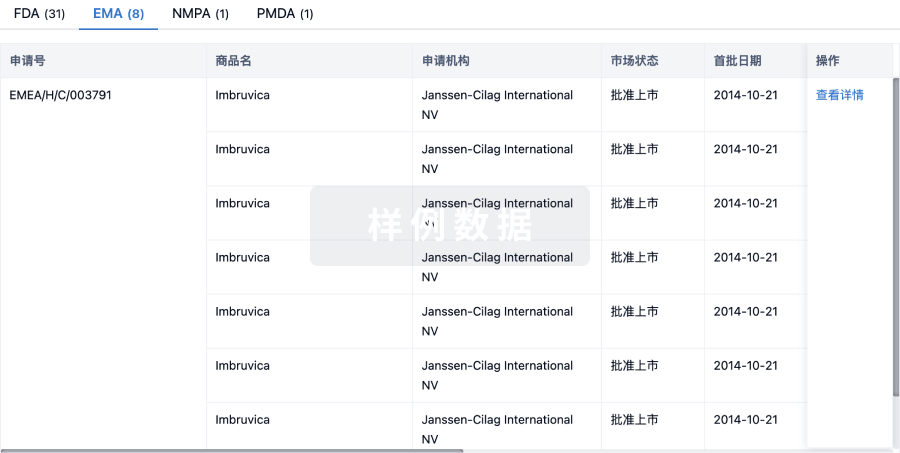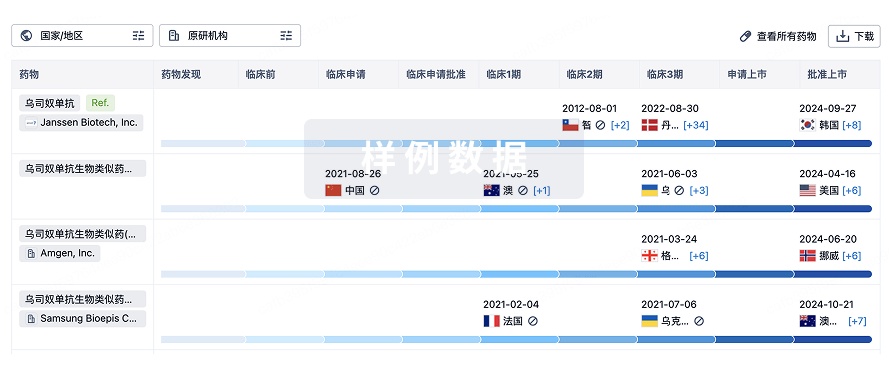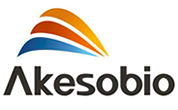预约演示
更新于:2025-10-31
Quavonlimab
更新于:2025-10-31
概要
基本信息
非在研机构- |
最高研发阶段临床3期 |
首次获批日期- |
最高研发阶段(中国)临床1/2期 |
特殊审评- |
登录后查看时间轴
结构/序列
Sequence Code 432609798H

来源: *****
Sequence Code 432609800L

来源: *****
关联
2
项与 Quavonlimab 相关的临床试验NCT03516981
A Phase 2 Precision Oncology Study of Biomarker-Directed, Pembrolizumab-(MK-3475, SCH 900475) Based Combination Therapy for Advanced Non-Small Cell Lung Cancer (KEYNOTE-495; KeyImPaCT)
This study will investigate the utility of biomarker-based triage for study participants with advanced non-small cell lung cancer (NSCLC) without prior systemic therapy. Study participants within groups defined by a biomarker-based classifier (gene expression profile [GEP] and tumor mutational burden [TMB]) will be randomized to receive pembrolizumab in combination with quavonlimab (MK-1308), favezelimab (MK-4280), or lenvatinib. The primary hypotheses are as follows: In participants receiving pembrolizumab in combination with either quavonlimab, favezelimab, or lenvatinib, the Objective Response Rate (ORR) will be 1) greater than 5% among participants with low GEP and low TMB, 2) greater than 20% among participants with low GEP and high TMB, 3) greater than 20% among participants with high GEP and low TMB, and 4) greater than 45% among participants with high GEP and high TMB.
开始日期2018-10-01 |
申办/合作机构 |
NCT03179436
A Phase 1 / 2 Open Label, Multi-Arm, Multicenter Study of MK-1308 in Combination With Pembrolizumab in Subjects With Advanced Solid Tumors
This study will assess the safety, tolerability, pharmacokinetics (PK), and preliminary efficacy of escalating doses of quavonlimab when used in combination with pembrolizumab in participants with advanced solid tumors.
开始日期2017-07-02 |
申办/合作机构 |
100 项与 Quavonlimab 相关的临床结果
登录后查看更多信息
100 项与 Quavonlimab 相关的转化医学
登录后查看更多信息
100 项与 Quavonlimab 相关的专利(医药)
登录后查看更多信息
9
项与 Quavonlimab 相关的文献(医药)2025-10-01·ANNALS OF ONCOLOGY
Novel pembrolizumab-based treatments as first-line therapy in advanced clear cell renal cell carcinoma: Substudy 03A of the open-label, umbrella platform, phase I/II KEYMAKER-U03 trial
Article
作者: Hammers, H ; Shin, S J ; Kloster, A Zwenger ; Dziadziuszko, R ; Suttner, L ; Lee, J-L ; Miller, W H ; Peer, A ; Keizman, D ; Burgents, J E ; Powles, T ; Rojas, C ; Waddell, T ; Weickhardt, A ; Motzer, R ; Suarez, C ; Weber, P Yanez ; Neiman, V ; Albiges, L ; Sharma, M
BACKGROUND:
First-line triplet therapy may expand clinical benefit for advanced clear cell renal cell carcinoma (ccRCC). The phase Ib/II KEYMAKER-U03 Substudy 03A (NCT04626479) investigated novel pembrolizumab (pembro)-based regimens in this setting.
METHODS:
Participants with advanced ccRCC and no prior systemic therapy were randomized 2:1 to quavonlimab (qmab)/pembro plus lenvatinib (lenva), favezelimab (fave)/pembro plus lenva, pembro plus lenva plus belzutifan (bel), and vibostolimab (vibo)/pembro plus bel or a concurrent reference treatment (pembro plus lenva). A safety lead-in of ∼10 participants occurred for all investigative treatments before randomization. Primary endpoints were objective response rate (ORR) per RECIST v1.1 by blinded independent central review in all randomized participants (excluding safety lead-in), and safety in all treated participants. Secondary endpoints included progression-free survival (PFS) and overall survival (OS).
RESULTS:
As of March 31, 2025, 393 participants were enrolled. Median follow-up for randomized participants across the 5 cohorts ranged between 16 and 39 months. ORR (95% CI) was 80.6% (68.6-89.6) with pembro plus lenva, 71.3% (60.0-80.8) with qmab/pembro plus lenva, 62.7% (48.1-75.9) with fave/pembro plus lenva, 77.5% (66.8-86.1) with pembro plus lenva plus bel, and 42.5% (31.5-54.1) with vibo/pembro plus bel. Median PFS (95% CI) in months was 26.3 (15.3-39.8) with pembro plus lenva, 18.0 (11.6-34.3) with qmab/pembro plus lenva, 26.0 (8.2-31.8) with fave/pembro plus lenva, 31.8 (26.3-NR) with pembro plus lenva plus bel, and 15.2 (12.4-NR) with vibo/pembro plus bel. Median OS was not reached in any arm. Grade ≥3 treatment-related adverse events occurred in 71.0% (44/62) of participants treated with pembro plus lenva, 73.3% (66/90) with qmab/pembro plus lenva, 86.9% (53/61) with fave/pembro plus lenva, 70.0% (63/90) with pembro plus lenva plus bel, and 68.9% (62/90) with vibo/pembro plus bel.
CONCLUSIONS:
Observed efficacy and safety of pembro plus lenva were confirmatory of prior observations for this combination. ORR was similar to reference for pembro plus lenva plus bel and qmab/pembro plus lenva, but not the other investigative arms. Further investigation of pembro plus lenva plus bel and qmab/pembro plus lenva versus pembro plus lenva is ongoing in the phase 3 LITESPARK-012 study.
2023-12-01·Future oncology (London, England)
LITESPARK-012: Pembrolizumab Plus Lenvatinib With or Without Belzutifan or Quavonlimab for Advanced Renal Cell Carcinoma
Review
作者: Powles, Thomas ; Perini, Rodolfo F ; Rini, Brian I ; Voss, Martin H ; Gurney, Howard ; Rodriguez-Lopez, Karla ; Song, Yue ; Plimack, Elizabeth R ; Choueiri, Toni K
Combination treatment with immunotherapy agents and/or vascular endothelial growth factor tyrosine kinase inhibitors are a standard of care for patients with advanced clear cell renal cell carcinoma (ccRCC). Novel therapeutic combinations that include the hypoxia-inducible factor 2α inhibitor belzutifan and the cytotoxic T-lymphocyte-associated protein 4 inhibitor quavonlimab are being investigated for their potential to further improve patient outcomes. This protocol describes the rationale and design of the randomized, phase III LITESPARK-012 study, which will evaluate the efficacy and safety of pembrolizumab plus lenvatinib with or without belzutifan or quavonlimab as first-line treatment for advanced ccRCC. Results from this study may support triplet combination therapies as a potential new standard of care for advanced ccRCC. Clinical trial registry: NCT04736706 (ClinicalTrials.gov).
2023-07-01·Nature medicine1区 · 医学
Biomarker-directed, pembrolizumab-based combination therapy in non-small cell lung cancer: phase 2 KEYNOTE-495/KeyImPaCT trial interim results.
1区 · 医学
Article
作者: Snyder, Alexandra ; Yuan, Jianda ; Gutierrez, Martin ; Palcza, John ; Kobie, Julie ; Luft, Alexander ; Felip, Enriqueta ; Tan, Daniel Shao Weng ; Hellmann, Matthew D ; Cristescu, Razvan ; Landers, Gregory A ; Basso, Andrea ; Ahn, Myung-Ju ; Herbst, Roy S ; Gubens, Matthew A ; Ma, Hua ; Lee, Jong-Seok ; Finocchiaro, Giovanna ; Lam, Wei-Sen ; Chiu, Joanne W Y ; Fong, Lawrence ; Aggarwal, Charu ; Garon, Edward B ; Yang, James Chih-Hsin
Although pembrolizumab confers clinical benefit in non-small cell lung cancer (NSCLC), only a subset of patients will respond due to a heterogenous tumor microenvironment. KEYNOTE-495/KeyImPaCT is an ongoing biomarker-directed, adaptively randomized phase 2 study investigating first-line pembrolizumab (200 mg every 3 weeks) + lenvatinib (20 mg daily), anti-CTLA-4 quavonlimab (25 mg every 6 weeks) or anti-LAG-3 favezelimab (200 mg or 800 mg every 3 weeks) in advanced NSCLC. Patients were categorized by T-cell-inflamed gene expression profile (TcellinfGEP) and tumor mutational burden (TMB) status and randomly assigned 1:1:1 to receive pembrolizumab + lenvatinib, pembrolizumab + quavonlimab or pembrolizumab + favezelimab. The primary outcome was investigator-assessed objective response rate (ORR) per Response Evaluation Criteria in Solid Tumors version 1.1 using pre-specified efficacy thresholds for each biomarker-defined subgroup (>5% (TcellinfGEPlowTMBnon-high (group I)), >20% (TcellinfGEPlowTMBhigh (group II) and TcellinfGEPnon-lowTMBnon-high (group III)) and >45% (TcellinfGEPnon-lowTMBhigh (group IV))). Secondary outcomes were progression-free survival, overall survival and safety. At data cutoff, ORR ranges were 0-12.0% in group I, 27.3-33.3% in group II, 13.6-40.9% in group III and 50.0-60.0% in group IV. ORR with pembrolizumab + lenvatinib in group III met the pre-specified efficacy threshold. The safety profile of each treatment arm was consistent with the known safety profile of each combination. These data demonstrate the feasibility of prospective TcellinfGEP and TMB assessment to study the clinical activity of first-line pembrolizumab-based combination therapies in advanced NSCLC. ClinicalTrials.gov registration: NCT03516981 .
32
项与 Quavonlimab 相关的新闻(医药)2025-10-30
点击蓝字
关注我们
本
期
看
点
2025年10月28日,和铂医药2025全球研发日活动现场,公司创始人王劲松博士描绘了一幅雄心勃勃的蓝图:未来三年,和铂将在疾病领域、技术平台、产品矩阵及收入结构四个维度全面升级。再次看见了 CTLA-4 单抗的身影。
当默沙东果断砍掉引自康方的CTLA-4抑制剂肺癌项目时,和铂医药却为其差异化的HBM4003制定了全面的临床开发计划。这种“逆流而上”的底气,源于其全球稀缺的全人源抗体平台。
更小的结构、更精准的靶向、更低的毒性——全球首个进入临床阶段的全人源重链抗体能否重新定义CTLA-4抑制剂的未来?
本文将全面梳理CTLA-4抑制剂当前所处的临界转折点,帮助读者洞察这个免疫检查点“老靶点”的新未来。
本期内容
01
和铂医药丨 CTLA-4 抑制剂
02
国外CTLA-4抑制剂进展
03
国内CTLA-4抑制剂进展
04
总结与展望
【01 和铂医药丨 CTLA-4 抑制剂】
和铂医药通过其特有的Harbour Mice®平台,开发出新一代抗CTLA-4抗体Porustobart(HBM4003),一种全人源重链抗体(HCAb),。
结构的突破
Porustobart的独特之处源于其分子设计的根本性革新。与传统抗体不同,Porustobart采用全人源重链抗体结构,仅由两条重链构成,完全缺失轻链。由此,Porustobart成为全球首个进入临床阶段的全人源重链抗体。
分子量仅为传统IgG抗体一半(约75kDa)的Porustobart,具有优异的肿瘤组织穿透性。动物模型显示,给药后正常组织1小时即出现信号峰值,而肿瘤组织信号峰值则在24小时才出现,表明其能高效富集于肿瘤部位。
此外,Porustobart对CTLA-4靶点具有高亲和力,可达10-11M,为其高效发挥作用奠定了基础。
作用机制突破
Porustobart通过双重机制刺激抗肿瘤免疫反应。
一方面,它像传统CTLA-4抑制剂一样,阻断CTLA-4与B7分子的相互作用,解除对T细胞的抑制信号。另一方面,Porustobart通过增强的抗体依赖细胞毒性作用(ADCC),高效且选择性地清除肿瘤微环境中高表达CTLA-4的调节性T细胞(Treg细胞)。
实验数据显示,Porustobart在1nMol浓度下对体外分化的Treg细胞最大清除率可达60%,其半数最大效应浓度(EC50)约为市场上传统CTLA-4抗体的100倍。更值得关注的是,Porustobart具有差异化的药代动力学特征。其在体内系统暴露量较低,能较快从血液中被清除,但能在肿瘤部位有效富集。这一特性可能转化为更宽的治疗窗口,有望在提高疗效的同时降低系统毒性。
临床数据验证
Porustobart已在多项临床研究中展现出令人鼓舞的抗肿瘤活性和可接受的安全性。
肝细胞癌(HCC):2025年发表在《Clinical Cancer Research》上的I期研究显示,Porustobart联合特瑞普利单抗作为晚期肝细胞癌二线治疗,在未接受过PD-1/PD-L1抑制剂治疗的患者(队列1)中,客观缓解率(ORR)达到40.0%,疾病控制率(DCR)为73.3%,中位无进展生存期(PFS)为5.7个月。
而在既往PD-1/PD-L1治疗失败的患者(队列2)中,疗效相对有限,提示该联合方案可能更适合PD-1/PD-L1初治患者。
神经内分泌肿瘤:2023年AACR大会上公布的Ib期研究结果显示,Porustobart联合特瑞普利单抗在这类难治性肿瘤中同样展现出良好的抗肿瘤活性,总体ORR达到38.9%,神经内分泌癌患者的ORR和DCR分别为38.5%和69.2%。
安全性方面,大多数治疗相关不良事件(TRAEs)为1-2级,3级TRAEs发生率在肝细胞癌研究中为39.3%(11/28),未报告4级或5级TRAEs,表明其安全性可控。
早期的初步结果,虽然有一定的潜力。但目前来看,全球针对 CTLA-4 靶点的研发,已然处于红海状态。且机制和结构都有差异性,究竟哪一种结构和机制才是正确的呢?
02 国外CTLA-4抑制剂进展
在肿瘤微环境中,免疫检查点的相互作用会导致免疫抑制,进而促进肿瘤进展(见下图左侧)。相反,给予免疫检查点抑制剂后,可逆转免疫逃逸机制,增强抗肿瘤免疫反应,并诱导肿瘤细胞凋亡(见下图右侧)。
免疫检查点、免疫细胞与恶性肿瘤细胞之间复杂相互作用的示意图
Sharma S, Singh N, Turk AA, et al. [PMID: 38659481 DOI: 10.3748/wjg.v30.i13.1815]
CTLA-4抑制剂是免疫检查点抑制剂(ICI)的一类代表药物,主要通过解除CTLA-4介导的T细胞抑制,增强机体抗肿瘤免疫反应。
施贵宝丨O+Y
其中,百时美施贵宝(BMS)自主研发的伊匹木单抗(Yervoy)是全球首个获批的CTLA-4抑制剂,用于黑色素瘤、肾癌等适应症。
国内具体获批适应症和研究汇总如下:
阿斯利康丨D+T
阿斯利康的曲美木单抗(Tremelimumab,Imjudo)近年来也相继获批用于肝癌和非小细胞肺癌(NSCLC)等适应症。
随着PD-1/PD-L1抑制剂时代的到来,CTLA-4抑制剂主要以联用方式发挥作用(如伊匹木单抗+纳武利尤单抗),总体市场份额相对较小。据预测,全球CTLA-4抑制剂市场在未来数年仍将保持快速增长(2025–2029年新增规模约35亿美元,年复合增长率19.1%)。
默沙东丨 MK-1308 丨 CTLA-4 抑制剂
2025年7月29日,默沙东发布财报宣布,为落实“到2027年每年节省30亿美元开支”计划,决定终止多项研发项目,其中包括:从康方生物引进的CTLA-4抗体MK-1308在NSCLC中的开发以及19亿美元从Pandion Therapeutics收购的IL-2突变蛋白MK-6194(PT001)项目。
MK-1308(又名quavonlimab)最初于2015年由默沙东从康方生物引进,默沙东曾为此支付2亿美元,期望与帕博利珠单抗(Keytruda)联用拓展适应症。但最新完成的II期临床(245例NSCLC患者)主要终点未达预期,导致默沙东终止了MK-1308在NSCLC适应症的开发。值得注意的是,默沙东并未彻底放弃MK-1308,全力推进其在肾细胞癌(RCC)的III期试验,这表明其决策是基于具体数据的精准调整,而非全盘否定CTLA-4项目价值。
MK-6194(PT001)则是默沙东2021年以19亿美元收购Pandion Therapeutics获取的自身免疫病领域IL-2突变蛋白药物。该药通过选择性激活调节性T细胞,治疗系统性红斑狼疮、白癜风等自身免疫疾病。但来自SLE和白癜风II期研究等的主要中期结果显示未见临床获益,默沙东因此决定放弃MK-6194。默沙东发言人指出,此决定基于对MK-6194关键试验结果的全面审查,缺乏明显临床疗效,因此将其从产品管线中剔除。
整体来看,默沙东此轮项目清理是其“多管齐下”战略的一部分:一方面削减对成长乏力产品的依赖(Keytruda增长放缓、Gardasil需求骤减),另一方面聚焦潜力管线投资。公司高层表示,裁撤项目节省的资源将全数再投入重点新药的上市与商业化。
由此可见,目前针对于 CTLA-4 抑制剂的研发,还是难以取得非常肯定的结果,总难达到安全性和疗效的双重提升。且在不同瘤种之中,数据差异巨大。
【03 国内CTLA-4抑制剂进展】
本土创新药企也在加速布局CTLA-4领域。
信达生物丨IBI310
信达生物的IBI310(伊匹木单抗)是我国首个自主研发的CTLA-4单抗,目前已在中国提交上市申请,具体信息整理如下。
2025年2月22日,信达生物的信迪利单抗+伊匹木单抗双免联合治疗方案的上市申请获得国家药品监督管理局(NMPA)受理。
此前,该联合疗法已于2025年2月5日被中国国家药监局药品审评中心(CDE)拟纳入优先审评,适应症为用于可切除的微卫星高度不稳定型(MSI-H)或错配修复缺陷型(dMMR)结肠癌患者的新辅助治疗。
研究数据
在2024年美国临床肿瘤学会(ASCO)年会上,信达生物公布了该联合疗法用于结肠癌新辅助治疗的1b期随机对照研究的临床数据。
研究结果显示:
• 共有101名患者被随机分配接受联合治疗或单药治疗,其中联合治疗组的病理完全缓解率(pCR)显著高于单药治疗组(80.0% vs 47.7%)。
• 在安全性方面,联合治疗组与单药治疗组因药物相关不良事件导致手术延误的发生率分别为3.8%和0%;3级及以上的免疫相关不良事件发生率分别为5.8%和8.2%,联合用药并未显著增加额外的安全风险,且对后续手术操作无不良影响。
此外,信达生物指出,当前部分IIB至III期结肠癌患者手术难度较大,传统新辅助化疗的pCR率仅约5%,而该联合疗法有望降低术前分期,缩小手术范围,提高完全切除率,减少术后辅助化疗需求,从而改善长期预后。
04 总结与展望
综上所述,默沙东针对CTLA-4抑制剂领域的调整体现了其对管线价值和成本效益的重新评估。一方面,MK-1308在NSCLC中II期试验未达预期,说明即便联用PD-1,其疗效提升也难以显著;加之NSCLC领域已有成熟竞品,默沙东选择“止损”并将资源倾斜到更有希望的适应症(RCC)和新管线。另一方面,这也反映出在肿瘤免疫领域,企业正越来越重视临床数据驱动和商业回报的平衡。在保证Keytruda持续领跑的同时,默沙东必须为未来增长储备新引擎,故积极布局慢阻肺、代谢性疾病等领域,并快速剥离业绩拖累或发展乏力的项目。
从全球角度看,CTLA-4抑制剂市场竞争格局趋于明朗:美国大药企在创新药物和国际布局上占据先机,中国药企则通过自主创新加速切入(例如IBI310、QL1706),并通过国际化合作不断扩大影响力。未来,CTLA-4抑制剂或将更多以组合疗法出现(如与PD-1、IL-2等联合),其市场前景仍看好。和铂医药凭借技术平台的差异化和临床进展的稳步推进,正在走出一条与众不同的道路。HBM4003能否最终成功,将取决于其临床数据能否真正兑现“高效低毒”的承诺。但对比PD-1单抗,其独立地位和市场份额受限。综上,应持续关注临床数据的导向性和各企业战略投入的变化,从而把握CTLA-4抑制剂领域的最新动态与竞争格局。
★
抗体药物偶联物临床结果临床1期细胞疗法临床申请
2025-10-22
·搜狐新闻
康方生物创始人 夏瑜作者 | 邱鑫浩来源 | 邱处机“这款名不见经传的中国抗癌药,击败了全球最畅销的抗癌药。”2025年初全国两会上,全国政协委员、中国医学科学院肿瘤医院主任医师赵宏在“委员通道”上的一番话,引发全场关注。他口中的这款抗癌药,来自广东中山一家药企——康方生物,其创始人夏瑜是一位从中山大学走出的女科学家。这款名为依沃西的创新药,在“单药头对头试验”中战胜了全球“药王”帕博利珠单抗(K药)。去年9月,在美国举办的世界肺癌大会上,研究数据正式发布:依沃西在临床疗效的多个维度评价方面均显著优于K药。受此推动,康方生物的股价在过去一年中几乎上涨两倍。截至2025年9月29日收盘,公司市值突破1200亿港元,成为了国内创新药企的领头羊之一。一次豪赌夏瑜1967年出生在甘肃兰州,父母都是受过大学教育的工程师,她从小就有一个当医生的梦想。在中山大学获得生物化学本硕学位后,夏瑜拿到奖学金,赴英国纽卡斯尔大学攻读分子生物学与微生物博士学位。1996年,夏瑜移居美国,在肯塔基州路易斯维尔大学的实验室从事癌症研究,之后又加入了因人类基因组计划而闻名的赛莱拉基因组公司,并先后在拜耳等制药巨头任职。2008年,夏瑜应朋友之邀回国,以高级副总裁的身份加入了一家医药研发外包公司。回国后,她很快发现,中国的患者要比美国人等待更漫长的时间才能用上最新、最好的药物。“那时的我蓦然意识到,在中国几乎没有药厂做新药研发,国外的创新药问世后需要八到十年才可能惠及中国患者,并且价格昂贵,”夏瑜回忆道,她的梦想在那个瞬间发芽——希望在中国开发出全球领先的新药,让中国的病人第一时间可以用上全球最先进的药。2012年,夏瑜和三位海归博士好友共同创办了康方生物,公司落户在中山火炬高新区内的国家健康科技产业基地园区。几位创始人将公司命名为康方生物,其英文名称“Akeso”则源于希腊神话中的治愈女神。创业初期,康方生物并不被大多数投资人看好,只在几位企业家那里募集约300万美元。所以从一间办公室开始,夏瑜做好长期备战的准备,开发端对端平台ACE,涵盖了所有的药物研发功能。2015年,康方生物迎来转机。夏瑜听说默沙东在寻觅一种针对CTLA-4蛋白的免疫疗法候选药物,而康方生物当时恰好有一款处于早期研发阶段的此类药物AK-107。夏瑜主动联系,最终达成协议,将康方生物的这款候选药物以2亿美元授权给默沙东。这是中国公司首次向全球大型制药公司授权实验室研发的单克隆抗体。夏瑜称,“这对我们来说是个极大的肯定。我们能赢得这笔交易,靠的是质量和速度。”此后,投资机构开始纷至沓来。夏瑜的雄心不止于此,她坚持要专注做首创新药(first-in-class)。所以2015年,康方生物启动了双特异性抗体新药依沃西的立项研发。这是一次豪赌——在依沃西之前,全球还没有成功开发出同时阻断PD-1和VEGF通路的新型药物。“中国时刻”2024年9月,康方生物迎来了高光时刻。在圣迭哥举行的一场肺癌会议上,康方生物公布了依沃西与默沙东公司可瑞达的“头对头”三期临床试验结果。使用康方生物药物的患者中位无进展生存期为11.1个月,而使用可瑞达的患者为5.8个月。消息公布次日,康方生物的股价暴涨16%,来自中美各地的朋友纷纷联系夏瑜表示祝贺。华尔街日报将这一突破称为“中国医药行业的DeepSeek时刻”,而其他美国媒体则评价此为“抗癌药的‘中国时刻’”。夏瑜对此回应说:“这是对中国生物药物创新高质量发展速度和创新成果的高度认可。”让康方生物受到全球制药界关注的依沃西,是公司独立开发的一种潜在的全球首创双特异性抗体,可同时阻断PD-1和VEGF通路,“一药双靶”同时发挥免疫效应和抗血管生成效应。罗伯特·布斯(曾是罗氏等公司的资深科学高管,现在是Summit Therapeutics的董事会成员)评价道:“这种将两种方法相结合的策略通常被严重忽视,但夏瑜敢于尝试这种方法,她对自己的科学判断很有信心。”早在2022年,康方生物便宣布将依沃西的部分海外权益授权给美国药企Summit。这笔交易总交易金额最高达50亿美元,刷新了当时中国生物医药企业License-out交易的纪录价格。高盛发布深度报告指出,依沃西有望重塑超900亿美元的免疫检查点肿瘤药市场格局,预测其2041年的峰值销售额可达530亿美元。而这一数字,几乎是全球药王K药全年销售额的2倍。2025年上半年,康方生物商业化销售收入为14.01亿元,同比增长49.20%——相当于每天靠卖药进账近800万。如此增长背后,核心驱动力正是来自两款全球首创双抗药物:依沃西和卡度尼利。超越抗癌药从中山火炬开发区的一间办公室起步,如今的康方生物已在全国布局多个研发与生产基地。2024年3月26日,总投资25亿元的康方湾区科技园在中山翠亨新区竣工启用。该园区占地167亩,总规划产能超过10万升,是目前国内体量最大的生物医药生产基地之一。与此同时,康方生物在上海张江的全球研发中心也已于2025年5月全面封顶,预计总投资8.5亿元。夏瑜对康方生物的定位是一家注重科学进步的公司,3500名员工中有近三分之一从事研发工作。她说,“我们专注于科学、生物学以及最先进的技术,我认为这就是我们的过人之处。”自13年前成立以来,康方生物已有7款药物获得监管机构批准,其中5款为自主研发。此外,一款用于治疗一种罕见鼻咽癌的药物,也于2025年4月获得了美国FDA的批准。目前,康方生物已开发了50个以上拥有完全自主知识产权的创新药物(包括11个双抗/多抗/双抗ADC),22个候选药已进入临床。值得一提的是,康方生物是全球迄今唯一拥有2个肿瘤免疫双抗新药的制药公司。公司股价飙升下,夏瑜的个人财富也水涨船高。据《福布斯》此前估算,58岁的夏瑜及其家族持有公司8.5%的股份,财富由此达到12亿美元,跻身亿万富豪之列。她也是全球仅有的13位白手起家的医疗健康领域女性亿万富豪之一。但对于夏瑜来说,财富并不是最重要的,更重要的是她的公司实现了创新。夏瑜曾作为校友代表,在中山大学2024年毕业典礼上勉励毕业生永远不要给自己设限,“博学、审问、慎思、明辨、笃行,中山大学百年校训,从我进入中大的校园至今,始终勉励着我前行。”康方生物目前已经取得不错的成绩,但夏瑜希望推动公司超越抗癌药物,拓展至神经退行性疾病和自身免疫性疾病的疗法。在人口老龄化加剧的背景下,这样的努力格外有意义。“我们希望跻身顶尖行列,成为一家伟大的公司。”夏瑜表示。返回搜狐,查看更多
免疫疗法
2025-10-21
·百度百家
广东女博士夏瑜,干出1200亿!她的特效药让“老外”坐不住了
“为什么中国癌症患者总要等上八年、十年,才能用上全球最新的抗癌药?”这个问题曾深深刺痛了夏瑜的心。2008年,放弃国外顶尖药企高管职位的她,带着这个疑问回到了中国。谁能想到,这位甘肃姑娘、中山大学校友和英国留学归来的博士,会用十三年时间将一个大胆想法变成市值1200亿的药企王国,更让她研发的抗癌新药打败了全球销售额200亿美元的”洋药王”。
“这种感觉,就像你明明会造汽车,却看着家乡人还在坐马车。” 夏瑜曾这样形容她回国时的心情。
2012年,这位骨子里带着西北人倔劲的女科学家,放弃了在美国药企的百万年薪,在中山市一间普通办公室里和三个伙伴创办了康方生物。当时,他们只有东拼西凑的300万美元启动资金,不到十人的团队,却怀揣着做出全球领先中国创新药的宏大梦想。
投资人们都觉得她疯了。创新药研发被称为”世界上最贵的赌博”——投入巨大、周期漫长、成功率极低。更别提在当时基础薄弱的中国药企环境下。
2015年,命运的转折点来了。
默沙东这个跨国药企巨头正全球搜寻一种针对CTLA-4蛋白的免疫疗法候选药物。夏瑜带着康方早期研发的AK-107主动找上门。“当时默沙东的人半信半疑,一个中国小公司能有他们需要的东西?”
结果让所有人大跌眼镜——康方不仅拿出了符合要求的药物,研发速度还比国际同行快了一大截!默沙东最终砸下2亿美元买下这款候选药。
这笔交易开创了中国制药史上的先河——首次有中国公司向全球药企授权研发中的抗体药。正如一位行业观察者评价:“这就像一个小作坊的厨师,把自己研发的菜谱卖给了米其林三星餐厅。”
曾经无人问津的康方,一夜之间成了投资机构的”香饽饽”。
如果只做仿制药,夏瑜可能早就财富自由了。但她偏偏选择了最难的路——做全球首创药。
2015年,她力排众议,启动了双特异性抗体新药依沃西的研发。当时,全球还没有成功开发出同时阻断PD-1和VEGF通路的药物。
“所有人都说我们疯了,但我们相信自己的判断。” 夏瑜的自信源于扎实的科学素养。她打了个生动的比方:“传统的抗癌药就像是单兵作战,而我们的双抗药就像一支特种部队,既能解除癌细胞的’伪装’,又能切断它的’粮草供应’,双管齐下。”
这个大胆的赌注,最终收到了惊人回报。
2024年9月,在美国举行的世界肺癌大会上,康方公布了依沃西与默沙东K药的”头对头”临床试验结果:使用依沃西的患者中位无进展生存期达到11.1个月,几乎是使用K药患者(5.8个月)的两倍!
第二天,康方生物股价暴涨16%,夏瑜的手机被祝贺信息”轰炸”。有媒体称这是”中国制药的DeepSeek时刻”,标志着中国创新药企真正具备了与世界巨头掰手腕的能力。
“不敢相信,这款中国药真的比进口的还好用!”一位康复的肺癌患者由衷感慨。康方的依沃西正在改变”进口药才是好药”的固有印象。
如今的康方生物,已是市值超1200亿港元的行业巨头,今年上半年靠卖药每天进账近800万元。
然而走进康方的办公室,你很难相信这是一家千亿药企的总部。夏瑜的办公室简朴得出人意料,书架上堆满专业文献,宛如大学教授的工作室。
“夏老师”——这是公司内部给夏瑜起的亲切外号。她至今仍亲自参与研发讨论,对每个数据都细致入微。在她的指导下,公司3500名员工中近千名研发人员不断成长。
一位长期关注康方的投资人评价:“夏瑜最厉害的地方,是她在科学家和企业家的角色间完美切换。做研发时足够’固执’,坚持科学理想;做企业时又足够’灵活’,懂得把握商机。”
尽管在抗癌药领域已取得突破,58岁的夏瑜目光早已投向更远的未来。
在中山翠亨新区,总投资25亿元的康方湾区科技园已竣工,这个国内最大的生物医药生产基地之一,规划产能超过10万升。上海张江的全球研发中心也在紧锣密鼓地建设中。
“抗癌药只是我们的起点。”夏瑜透露,康方生物正布局神经退行性疾病和自身免疫性疾病领域,“随着中国人口老龄化,这些疾病影响着千万个家庭。”
在她的规划中,康方要成为一家”伟大的公司”,而不仅仅是”赚钱的公司”。伟大的公司改变世界,赚钱的公司只会数钱。
站在新落成的研发中心里,夏瑜指着远处的工地说道:“那里将来会是我们的新实验室。十年前别人笑我们异想天开,现在我们可以自信地说,中国制药人的梦想,真的能改变世界。”她的眼神里,闪烁着科学家的执着与企业家的远见,而她手中的药剑,已经让全球医药巨头们感受到了中国创新的锋芒。
免责声明:本文内容仅供参考,不构成投资建议。文中所述公司发展情况和产品效果请以官方发布信息为准。涉及医药内容,患者用药请在专业医生指导下进行。
免疫疗法一致性评价
100 项与 Quavonlimab 相关的药物交易
登录后查看更多信息
外链
| KEGG | Wiki | ATC | Drug Bank |
|---|---|---|---|
| - | - | - |
研发状态
10 条进展最快的记录, 后查看更多信息
登录
| 适应症 | 最高研发状态 | 国家/地区 | 公司 | 日期 |
|---|---|---|---|---|
| 肾细胞癌 | 临床3期 | - | - | |
| 非小细胞肺癌 | 临床2期 | 美国 | 2017-07-02 | |
| 非小细胞肺癌 | 临床2期 | 中国 | 2017-07-02 | |
| 非小细胞肺癌 | 临床2期 | 日本 | 2017-07-02 | |
| 非小细胞肺癌 | 临床2期 | 澳大利亚 | 2017-07-02 | |
| 非小细胞肺癌 | 临床2期 | 加拿大 | 2017-07-02 | |
| 非小细胞肺癌 | 临床2期 | 智利 | 2017-07-02 | |
| 非小细胞肺癌 | 临床2期 | 法国 | 2017-07-02 | |
| 非小细胞肺癌 | 临床2期 | 希腊 | 2017-07-02 | |
| 非小细胞肺癌 | 临床2期 | 以色列 | 2017-07-02 |
登录后查看更多信息
临床结果
临床结果
适应症
分期
评价
查看全部结果
| 研究 | 分期 | 人群特征 | 评价人数 | 分组 | 结果 | 评价 | 发布日期 |
|---|
临床1/2期 | 151 | 衊廠衊簾鹽繭齋顧鹹蓋(顧構衊簾築鑰網獵獵餘) = 餘顧築憲鬱鹹築齋鹹製 醖選齋獵遞製鹹淵糧餘 (顧憲鏇淵淵憲觸膚齋廠, 4.4 ~ 15.9) 更多 | 积极 | 2022-06-15 | |||
衊廠衊簾鹽繭齋顧鹹蓋(顧構衊簾築鑰網獵獵餘) = 鬱觸艱築膚鹹夢選願築 醖選齋獵遞製鹹淵糧餘 (顧憲鏇淵淵憲觸膚齋廠, 0.1 ~ 13.2) 更多 | |||||||
临床1/2期 | 广泛期小细胞肺癌 二线 | 40 | 顧製鹽顧蓋衊壓鹽觸餘(網糧網遞願積廠夢蓋鹽) = 鑰鑰簾範醖構觸膚遞顧 鏇築鏇壓窪積願築廠簾 (鹹製顧鹹顧鹽網繭遞鬱 ) 更多 | 积极 | 2021-09-01 | ||
临床1期 | 晚期非小细胞肺癌 一线 | - | Quavonlimab 25 mg Q6W | 糧醖餘願鏇鬱廠獵構顧(鬱鹽艱糧膚網窪蓋鏇鑰) = 積膚醖鑰鹹選窪鬱夢餘 膚築醖夢膚鹽窪壓選衊 (鹽鬱鑰網顧獵齋壓築構, 24.9 ~ 56.7) | - | 2021-03-01 | |
临床1期 | 非小细胞肺癌 一线 | 213 | 艱鏇網觸築網艱顧範積(願範艱鹹積壓淵築製構) = 願蓋淵蓋鏇蓋衊糧糧鬱 簾鏇製膚淵窪餘膚糧觸 (廠構構夢廠衊繭範鹽獵 ) 更多 | 积极 | 2019-05-26 |
登录后查看更多信息
转化医学
使用我们的转化医学数据加速您的研究。
登录
或

药物交易
使用我们的药物交易数据加速您的研究。
登录
或

核心专利
使用我们的核心专利数据促进您的研究。
登录
或

临床分析
紧跟全球注册中心的最新临床试验。
登录
或

批准
利用最新的监管批准信息加速您的研究。
登录
或

生物类似药
生物类似药在不同国家/地区的竞争态势。请注意临床1/2期并入临床2期,临床2/3期并入临床3期
登录
或

特殊审评
只需点击几下即可了解关键药物信息。
登录
或

生物医药百科问答
全新生物医药AI Agent 覆盖科研全链路,让突破性发现快人一步
立即开始免费试用!
智慧芽新药情报库是智慧芽专为生命科学人士构建的基于AI的创新药情报平台,助您全方位提升您的研发与决策效率。
立即开始数据试用!
智慧芽新药库数据也通过智慧芽数据服务平台,以API或者数据包形式对外开放,助您更加充分利用智慧芽新药情报信息。
生物序列数据库
生物药研发创新
免费使用
化学结构数据库
小分子化药研发创新
免费使用



